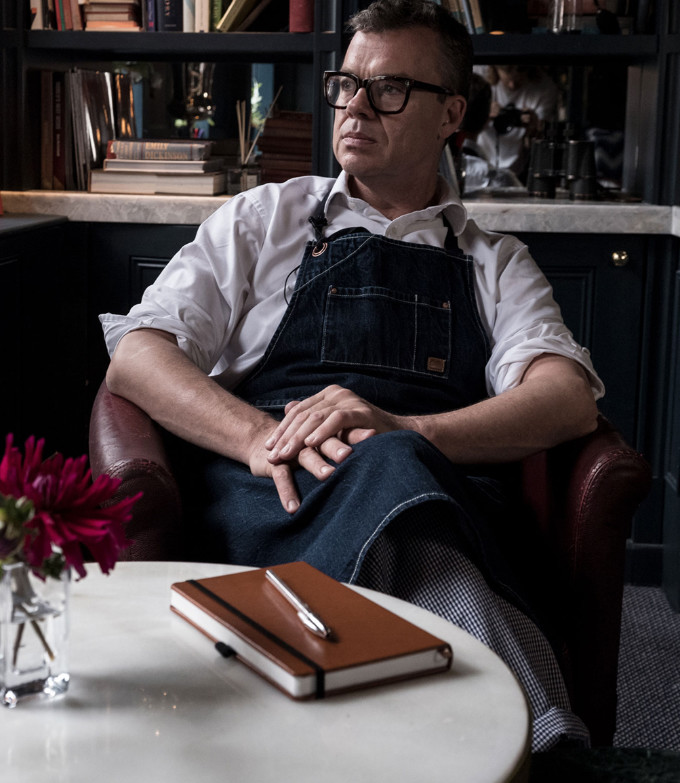What is a dish you grew up with?
Every year, especially for the New Year, my family goes to Tlaxcala to visit my grandparents. My grandpa had a lot of rabbits on his farm, so he always hunted and grilled them with chile adobo for us. Even though we ate it every time we visited him, we never got tired of it because it was simple yet familiar and delicious.
“[My grandpa] coated the top of the rabbit with adobo paste before cooking, giving it an addictive heat that enhanced the flavors even further.”
I vividly remember him soaking the rabbit in vinegar and salt for about 15 minutes immediately after killing it. Then, he’d wash it with water before boiling it with onion, garlic, and salt. While that boiled, he mixed adobo, onion, garlic, salt, and some dry chiles into a paste. Most of the time, he used dry guajillo, a fruity chile that has a sweet heat, but sometimes he’d use arbol chile or pasilla for a more smoky, earthy flavor. He coated the top of the rabbit with adobo paste before cooking, giving it an addictive heat that enhanced the flavors even further.
He also made a sauce on the molcajete with roasted tomatillos, onion, garlic, fresh chiles, and a pinch of cumin. He served that with frijoles de olla – a very simple side dish made with boiled beans, onions, garlic, salt, and epazote. The beans, though simple and unassuming, helped keep the heat and overall taste balanced. Then, we just rolled everything into a taco with some tortillas.
What is the first recipe you remember following?
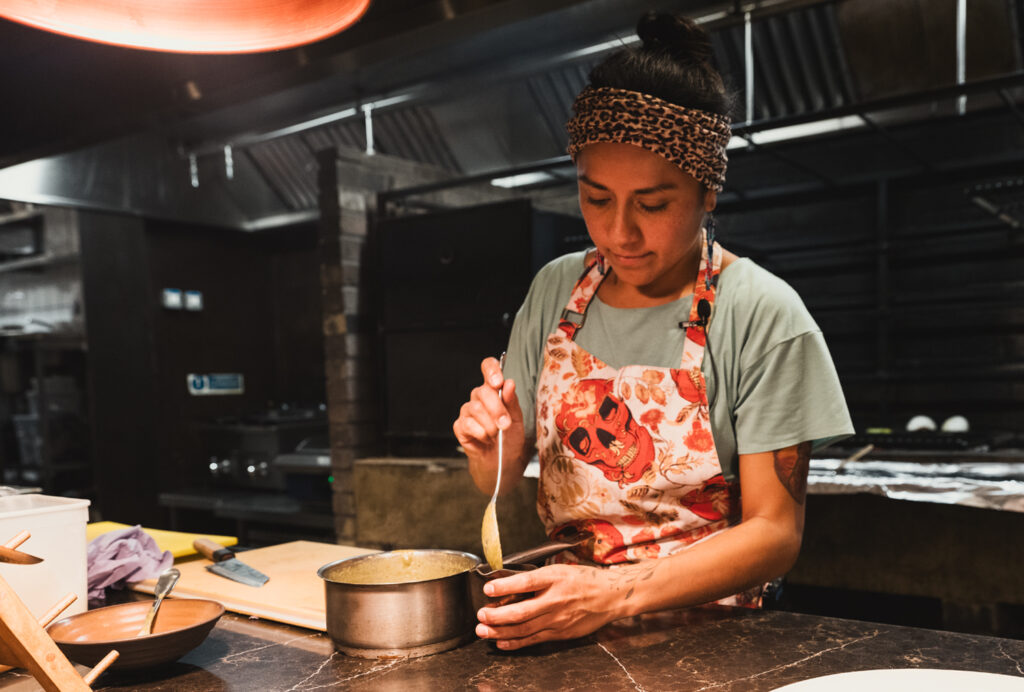
Traveling around Mexico when I was younger is when I started discovering the vastness of Mexican food. I connected with those we call “maestras cocineras,” women in their 50s teaching people how to cook in their villages. Learning from them, seeing their methods, and witnessing how they cook in connection with the land was fascinating.
One particular maestra was in Oaxaca, and I lived with her for eight months; she practically adopted me. I learned different mole preparations from her, but the most important one she taught me was mole chichilo. It has a very particular taste that I love but is definitely an acquired taste, its flavor is literally like earth. Imagine taking a bite of the soil outside – that’s how the mole tasted. The preparation must be done precisely to get that unique taste you won’t get anywhere else.
To make mole chichilo, you’ll need chiles, tomatoes, onions, a bit of black pepper, and cinnamon. Depending on the flavor you prefer, you can use two different types of chiles; pasilla chilhuacle for a sweeter, prune-like taste or pasilla oaxaqueno for extra spiciness and smokiness. You must roast and burn them thoroughly, including the seeds, so you can intensify their unique flavors and get closer to that unique earth-like taste. It’s also the first and most important step; without it, the mole will taste like any other mole, with some unpleasant bitterness.
When the chiles are ready, soak them in water for about half an hour to wash off the charring and remove the bitterness. While they’re soaking, blend onions and garlic, along with some corn dough and water for thickness. Strain the mixture before cooking it in a pan with hot oil.
Once the chiles are finished soaking, put them in a blender along with tomatoes and stock. Which stock to use depends on how you intend to serve the mole; chicken stock for chicken, pork stock for pork, or vegetable stock for vegetables. Strain the mixture into the same pan and mix everything until it turns into a nearly-black sauce.
What is the recipe/dish that you’ve cooked the most?
One of the most popular dishes we serve in the restaurant is grilled chicken with mole verde. It’s based on a recipe from Central Mexico, where I was born, so it has a familiar flavor that reminds me of my childhood. It’s spicy, nutty, savory, and fresh without any acidity at all, with an added depth and freshness that feels very comforting to me.
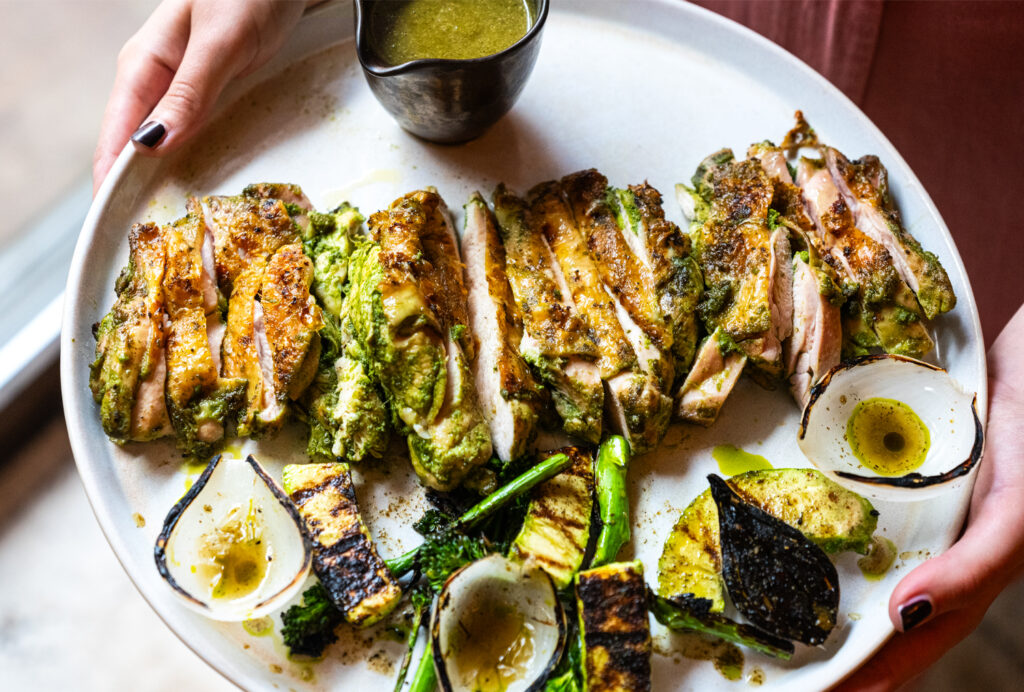
To make the mole, I use roasted pumpkin seeds, onion, garlic, tomatillo, jalapeño, herbs, parsley, and coriander. The roasted pumpkin seed provides nuttiness, while the jalapeño gives the sauce some heat. The herbs give the sauce that lovely freshness while lending the mole its vibrant green color.
I start by cooking the onions in oil for a few minutes before adding the garlic. Afterwards, I’ll add the tomatillos and jalapeño. I let them all cook for a bit before tossing in the roasted pumpkin seeds and broth. Just like with chichilo, the type of broth you use depends on how you plan to serve it. Let that simmer for 30 minutes and stir it every once in a while, so nothing sticks.
Near the end, I’ll add some oregano and a dash of cumin. When everything’s ready, I leave the sauce to cool before putting it in a blender with more herbs; usually parsley, coriander, and mint. Strain the mixture, and it’s ready to serve.
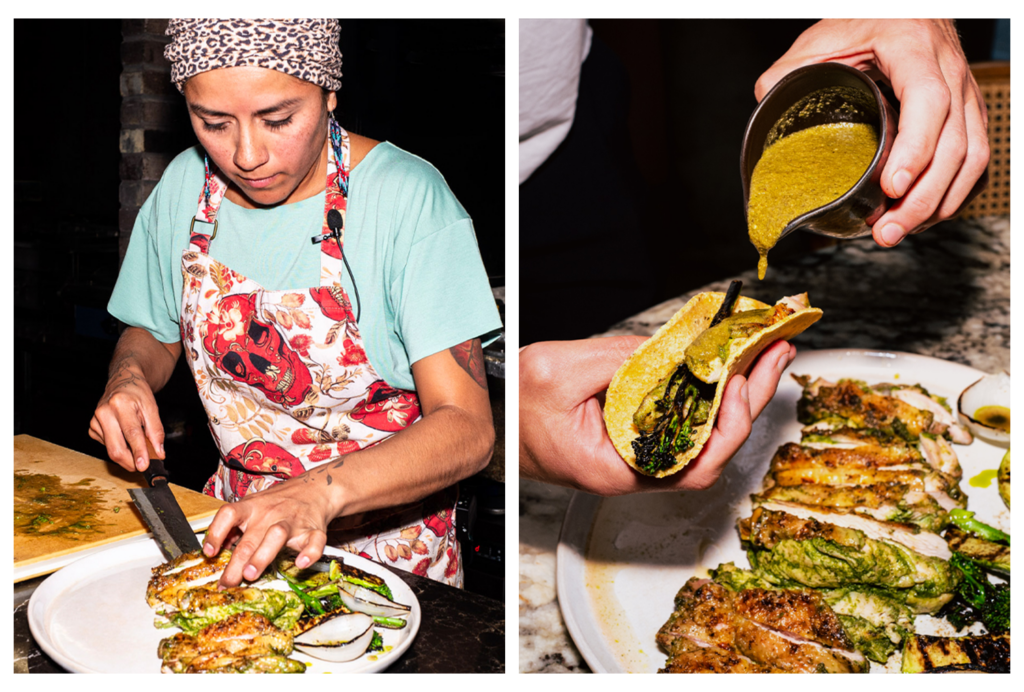
Traditionally, mole verde is served with boiled chicken breast in Mexico, but I prefer using roast chicken thighs for more flavor. In the restaurant, we sprinkle a whole chicken, that’s been butterflied and deboned, with salt and pepper before marinating it in a lot of garlic, onion, herbs, parsley, and coriander. I always make sure to use plenty of garlic because I love how it tastes on grilled chicken, and it pairs well with mole verde.
The chicken is grilled slowly at first, far above the charcoal so it’s almost slow roasted. Whilst it cooks I’ll brush the marinade over the chicken several times. When it’s close to being cooked I’ll bring the chicken down so it’s right above the hot charcoal and gets a good color on the skin and flesh. I’ll also grill seasonal vegetables, like zucchetta, sprouting broccoli and onions that have been pre-steamed, then serve those with the whole chicken sliced up, and tortillas.
Another dish I love to make, and it’s a really simple recipe, is gambas al Ajillo – Spanish garlic prawns. I keep everything on; the shells and the heads. I just clean the prawns and then marinate them in olive oil, salt, a little pepper and chopped garlic. I then cook them with a little bit of butter and guajillo chile. It’s something I really enjoy to cook every time, because it’s so quick and simple.
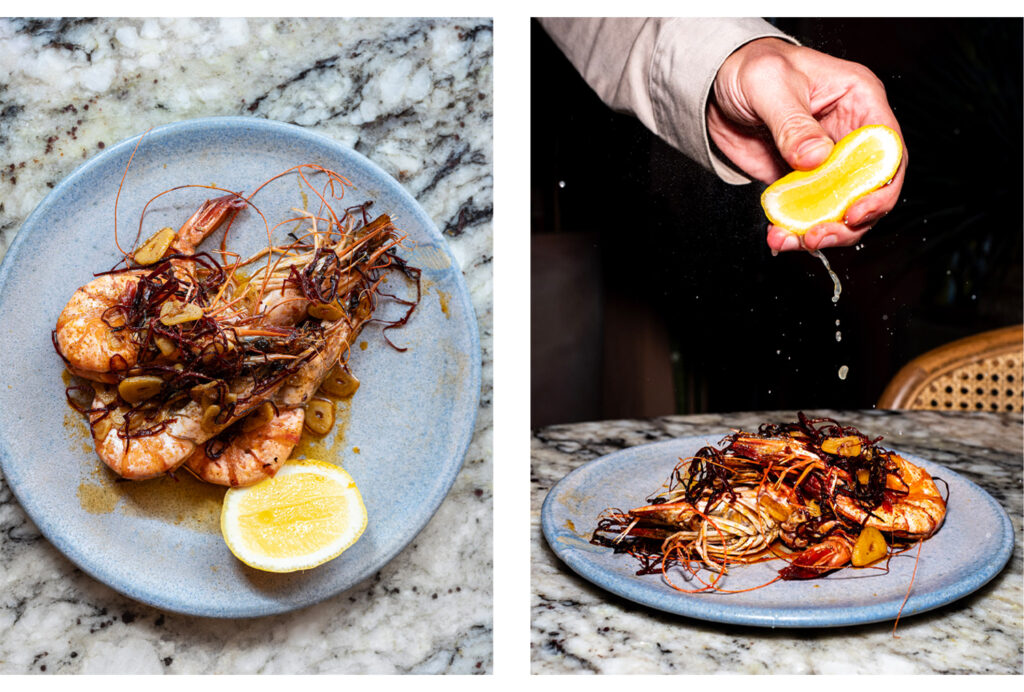
Who are the cooks or chefs whose recipes have inspired you?
“I can use traditional recipes as the basis of my creations, but I must also tap into my imagination and passion to create something new and unique.”
One of the books I enjoyed reading the most is “Manresa: An Edible Reflection” by David Kinch, which also happened to be the name of his restaurant in California. I love him a lot because he works very closely with farmers and uses fresh produce extensively. Using fresh produce is how I connect to the land with my cooking as a chef, so I felt a connection with him when I learned about his preferences.
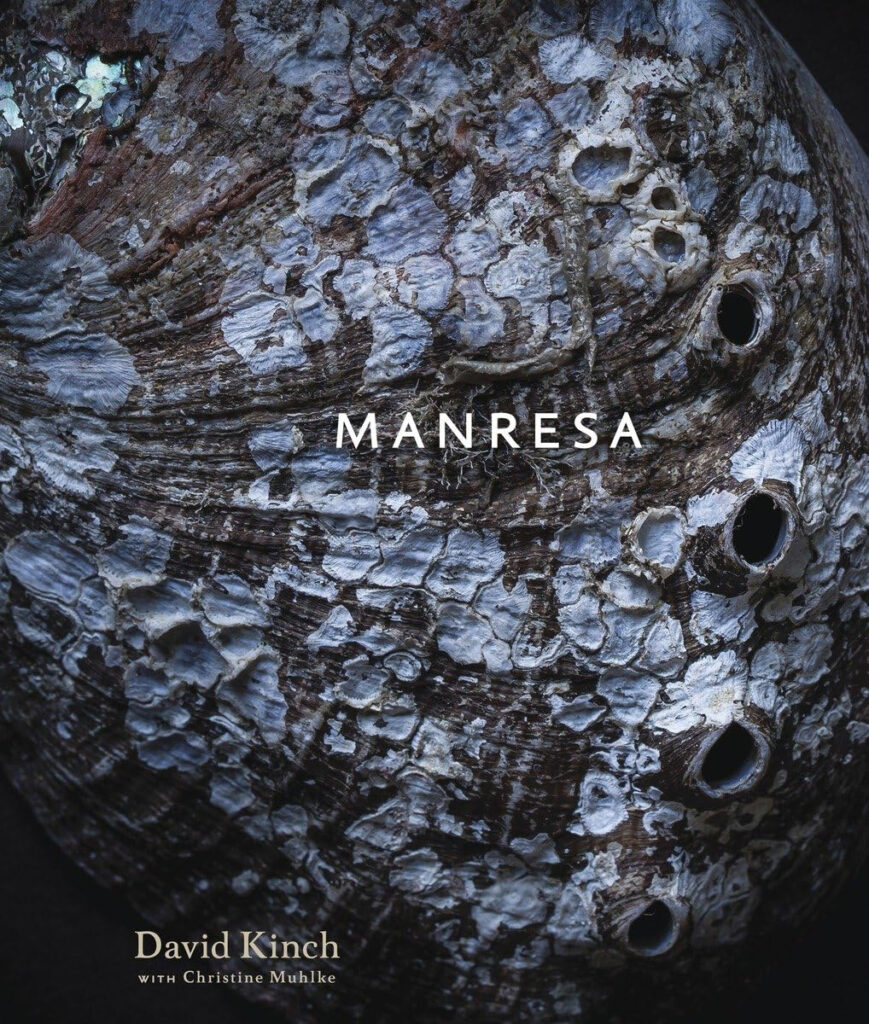 One of his dishes that truly amazed me was his seafood birria; I’ve never seen anyone make it with seafood before. Traditionally, birria is made with either beef, chicken, or lamb, so to see him use seafood was interesting and eye-opening. He made me realize that I need to balance traditional preparation with modern techniques. I can use traditional recipes as the basis of my creations, but I must also tap into my imagination and passion to create something new and unique.
One of his dishes that truly amazed me was his seafood birria; I’ve never seen anyone make it with seafood before. Traditionally, birria is made with either beef, chicken, or lamb, so to see him use seafood was interesting and eye-opening. He made me realize that I need to balance traditional preparation with modern techniques. I can use traditional recipes as the basis of my creations, but I must also tap into my imagination and passion to create something new and unique.
I also like how his cooking is always a mix of everything. He knows a variety of cuisines like French, Japanese and Mexican, and he uses his creativity to introduce a new range of fascinating flavors by combining them.
What is the recipe you would hand down to your family?
If I had kids, I would hand them down Aunt Margarita’s Mexican red rice recipe. This dish reminds me of our family gatherings where her rice dish was always present. Making it might seem easy, but it’s more difficult than it sounds. The rice has to be perfectly fluffy, and the water-to-rice ratio has to be precise. It’s one cup of rice to two cups of water, but you also have to consider the liquids you get from the other ingredients. Adding too much water removes that amazing texture of the rice.
To make it, wash the rice first before frying it in a lot of oil. Frying the rice gives the dish a nuttier taste later, and it makes the rice fluffier. Transfer the rice to a different pan once the grains become crispy and the colors change. Add onion, garlic, tomato, carrots, peas, and chicken stock to the rice, and sprinkle some coriander leaves on top before letting it cook.
What is a dish on your current menu that represents your approach to cooking?
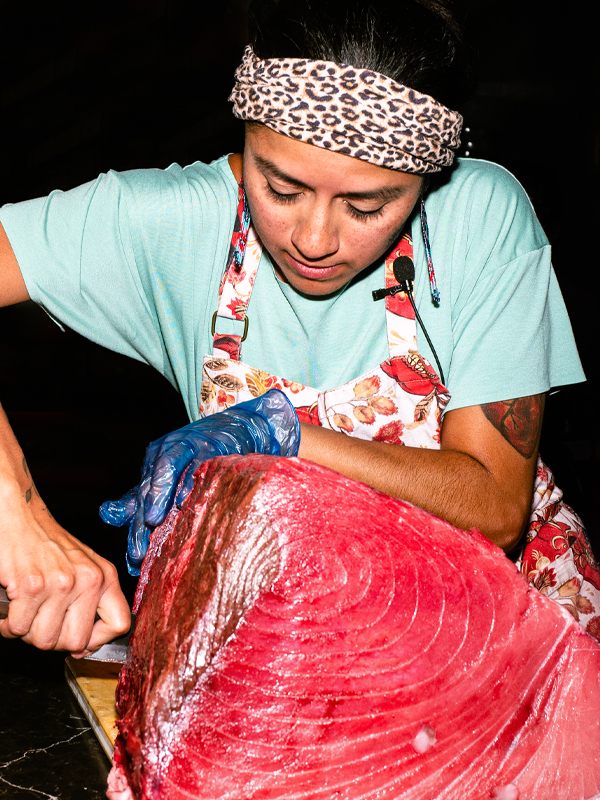
I really love the tuna tostada from our menu. It’s a simple yet flavourful dish, and it’s one of our best sellers in the restaurant. I’m very proud of it because I’ve been improving this dish over the years and managed to create something fresh and colorful. It’s also a wonderful fusion of Mexican and Japanese cuisine, where the use of acid via lemon and lime works hand-in-hand with spicy Mexican chiles to produce something delicious.
Making the tuna tostada is really simple; place marinated raw chutoro, or fatty tuna, on top of guacasalsa, before adding sesame seeds, flowers and lemon balm for garnish. The secret lies in how the tuna is marinated; 30 per cent macha sauce and 70 per cent soy vinaigrette. The ratio is important because I want the tuna to have a slight kick with lots of acidity. Surprisingly, those flavors work very well together. It’s somehow rich and punchy, yet fresh and delicate.
My macha sauce is based on a traditional recipe from Northern Mexico, which uses three dry chiles; arbol, guajillo, and pasilla. These chiles are preserved in oil, a bit of vinegar, salt, and spices. On the other hand, I make the soy vinaigrette by mixing soy sauce and lime juice, along with a bit of garlic, ginger, and a dash of rice vinegar.
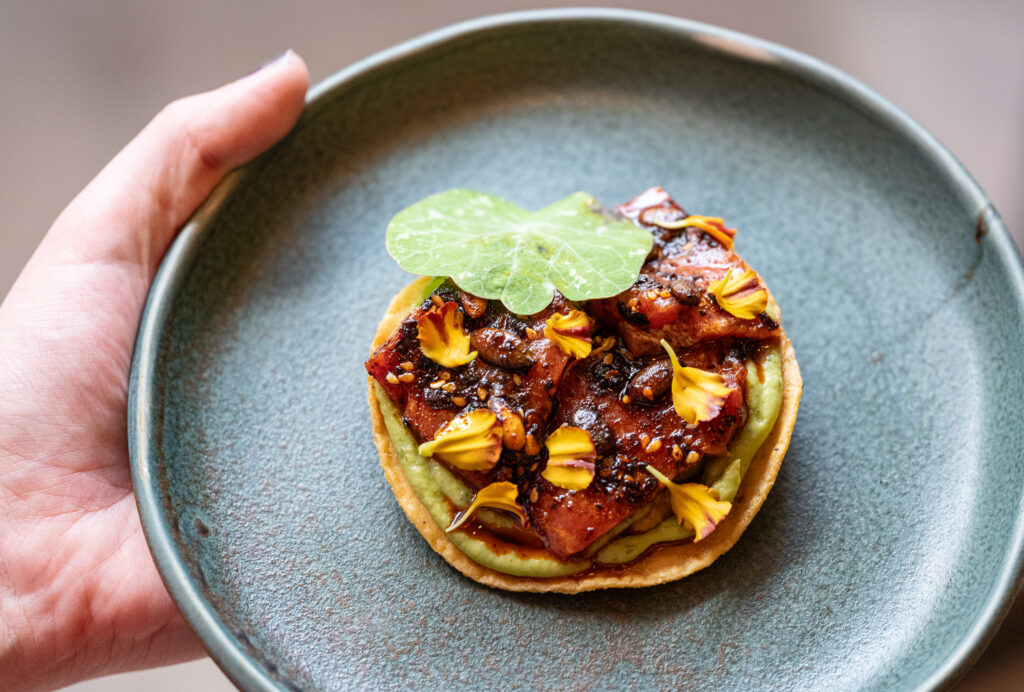

Chetan Sharma
LONDON, UK
"For any young British Asian chef, or any chef interested in Indian cooking, I want them to be able to come into this restaurant and understand Indian food and Indian flavors, but also learn techniques and be open minded."

Rafael Cagali
LONDON / SAO PAULO
"Opening Da Terra was a reconnection to my own origins. I felt lost in a way. The name Da Terra means from the earth, the idea being not to forget what you come from. I like to think that I’m still exploring Brazilian cooking."

Chris Leach
LONDON, UK
"There are quite a lot of recipes I’m proud of, but there are a few that I feel are genuinely original to me. My pig skin ragu recipe is one of those. There is no meat, or rather, flesh, in the dish; it's made from just pig’s skin."

Andrew Clarke
LONDON, UK
"My mum didn't care I was a professional cook. She was going to cook what she wanted to cook, and love what she was doing. And there’s an honesty and beauty to that."




